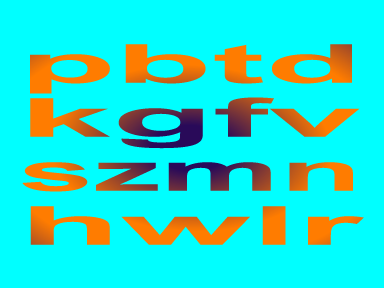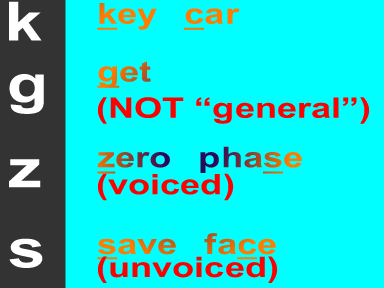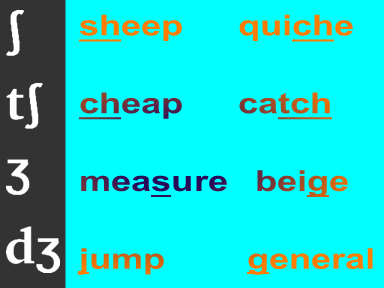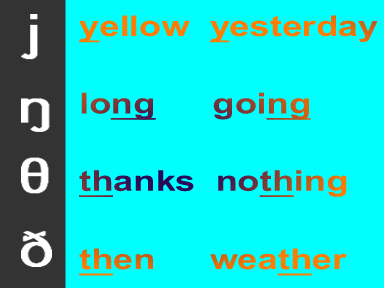Video-Task 3
This presentation will give you an overview of the consonant symbols that are used in phonetic transcriptions.
Let’s analyze the English alphabet for these sounds, just to give you a general idea of what to expect when you begin to study the phonetic symbols.
All together, there are 24 symbols for the various consonant sounds of English.
Sixteen of these correspond to letters of the normal alphabet: P, B – T, D – K, G – F, V – S, Zee or Zed – M, N – H, W, L and R.
Note that the symbol K applies not only to words spelled with a K, such as key, but also to words that contain a hard C, such as car and key. The symbol G only refers to the hard G of get. The symbol zed – or if you prefer, zee – corresponds to the initial sound of zero, but also to the voiced S in phase: The symbol S is the unvoiced S of save, which is the same sound as the soft C in face: By the way, in case you are unfamiliar with the terms “voiced” and “unvoiced” – when we pronounce a voiced consonant we use our vocal cords, as in zero and phase. An unvoiced consonant is made without the vocal cords, as in save and face.
The next four consonant symbols are all related to S and Z. These symbols may seem a bit strange, but the sounds are very straightforward. We begin with the sound that is spelled S-H in the word sheep, and C-H in the word quiche. The next symbol – a composite symbol — corresponds to the C-H of cheap, and the T-C-H of catch. These two symbols represent unvoiced consonants. The next two are the equivalent voiced consonants, the sound of the S in measure or the G in beige, and the sound of J un jump, or G in general.
And now for the last four consonant symbols. The first is a normal J, but the sound is that of a Y in normal spelling: yellow, yesterday. Next, we have a sort of N with a tail on it. This represents the N-G sound of words like long and going. The last two symbols refer to the two different ways of pronouncing T-H: the unvoiced T-H of thanks, and nothing, and the voiced T-H of then and weather.
Next time we will look at the vowel sounds. I hope you have enjoyed this little presentation. Thank you for listening.
Anthony Lombardi
Director
VirtuAule English Language System



